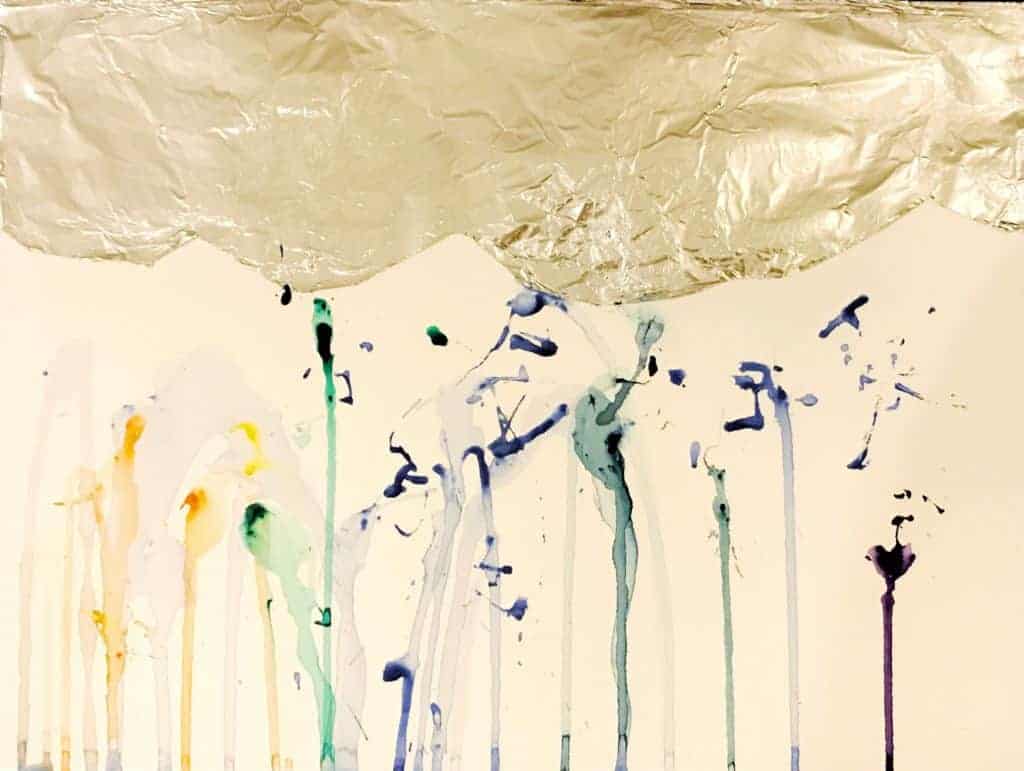

Organizing Brushes, Pens, and Other Materials When I make a mistake and need to lift paint off of the area, having clean water instantly available to use is immensely helpful and saves me the stress of frantically scrambling to get some while the mistake dries. I will usually have two bowls of water handy - one for cleaning my brushes, and the other for when I need to have clean water, such as for washes or other effects. It’ll keep the paper relatively flat, and you can adjust the angle of the painting throughout the process. If you want to put your paper at an angle while you paint, taping the paper to cardboard is a great option. I work from home and in a studio office, so to keep things portable-friendly I now just tape the edges of the paper, and iron the painting to flatten it after I’m done. Now that I've been using this medium for a while, I do things differently. When I was starting out, I used to tape my paper to something flat and sturdy, such as a piece of cardboard, or just directly to the table. Once I’ve found the size of paper that I want to paint on, I will go ahead and tape the edges of the paper. Here are a few of the set-up steps that I do before I start a painting, in no particular order: Taping the Paper Watercolour dries quickly compared to acrylic or oil so it never hurts to be prepared! Or, if you end up making a mistake, having what I lovingly call my "Oh Shit" materials (paper towel, clean water, a white gel pen, etc) right at your disposal can oftentimes help to reverse a mistake before the paint dries and it becomes permanent. When everything is set up before you start, you can efficiently go between different stages of the painting. Regardless of what you’re painting with, it’s always a good idea to set up your painting space and materials before you start. These painting materials can be found at any art/craft store, or online. Spray bottle, to keep your paper moist while working.Masking fluid/drawing gum, for whiting out areas.Paint palette, or something to mix your paints on.Watercolour paint (in a pan, tubes, or sticks).Susan Chiang has a really solid article for choosing watercolour paper for beginners, and if you’re still at a loss, your local art store will absolutely have someone that can help you out! You may be thinking that this just makes painting with watercolour even more daunting. It’s better to use the right tool for the job and get better results. Printer paper, sketching paper, acrylic paper, etc are not designed to hold water and will warp terribly. Paper is also very important - most papers are not suitable as watercolour paper, including, in my opinion, most multi-media paper. If you don’t have paint yet and aren’t sure what to get, I really like this blog post for deciding on watercolour paint that will work for you. That said, if you already have a watercolour set, use it! Unless it’s so old the paint is mouldy or it’s a set you'd find in a kindergarten classroom, you can still apply the same techniques below.

This will make it harder to learn the following techniques properly. Cheap watercolours will be harder to use and you won’t get the effects that you are looking for as easily.
#Pop art water color drips professional
Student grade or professional grade watercolours will mean more vibrant colours, the paint won’t ‘crack’ when drying, and there will be easier manipulation (ie blending) of the paint. While you do NOT need to spend hundreds of dollars on top of the line watercolours and brushes to create paintings with watercolour, most artists will agree that medium to higher quality materials are best, particularly if you plan to sell your paintings. What materials do I need for watercolour?Ĭompared to some creative outlets, painting with watercolour requires relatively few materials. Trust me - once you try out these techniques and get a good feel for them, watercolour will become an exciting and beautiful medium through which to create artwork. Confidence with watercolour comes with practice, so don’t let what you’ve heard discourage you, and especially don’t judge yourself for trying! Remember, learning any skill requires practice and perseverance. While I appreciate that it can seem unpredictable or unforgiving (I used to think that too!) watercolour is also a very flexible and dynamic medium for creating artwork once you understand and continue to practice some basic techniques. It can be challenging, but it’s worth the effort if you keep at it.īy the end of this blog post, my aim is to have you ready to pull out the old watercolour set and just paint! Is painting with watercolour difficult? It’s a completely different medium to acrylic or oil. It’s quite normal to feel hesitant to try watercolours. They get discouraged because they aren’t sure what techniques to use to get the effects they want, and so they just stop painting altogether. Most people I’ve talked to feel that they can’t manipulate watercolour like they want to.


 0 kommentar(er)
0 kommentar(er)
